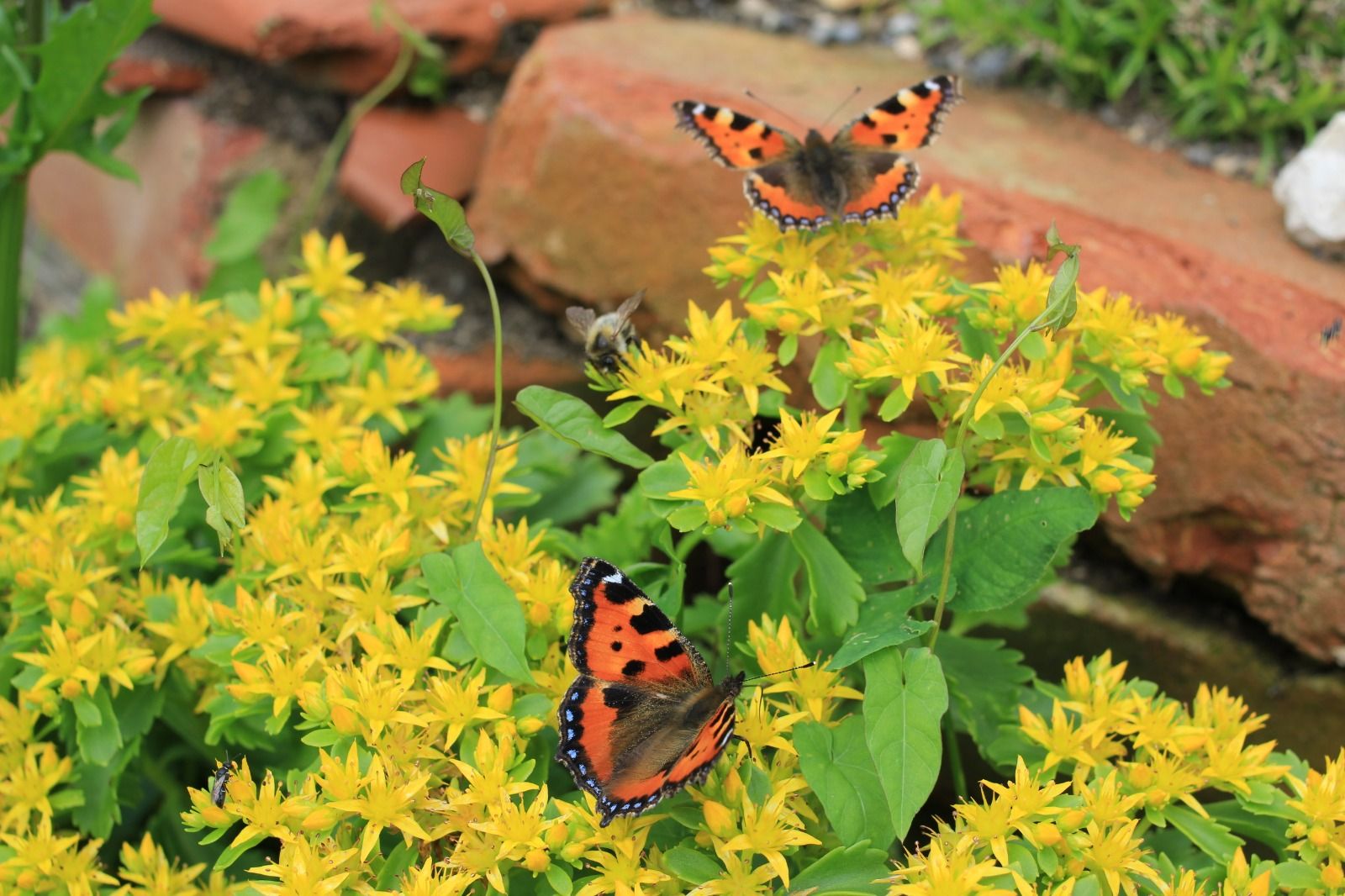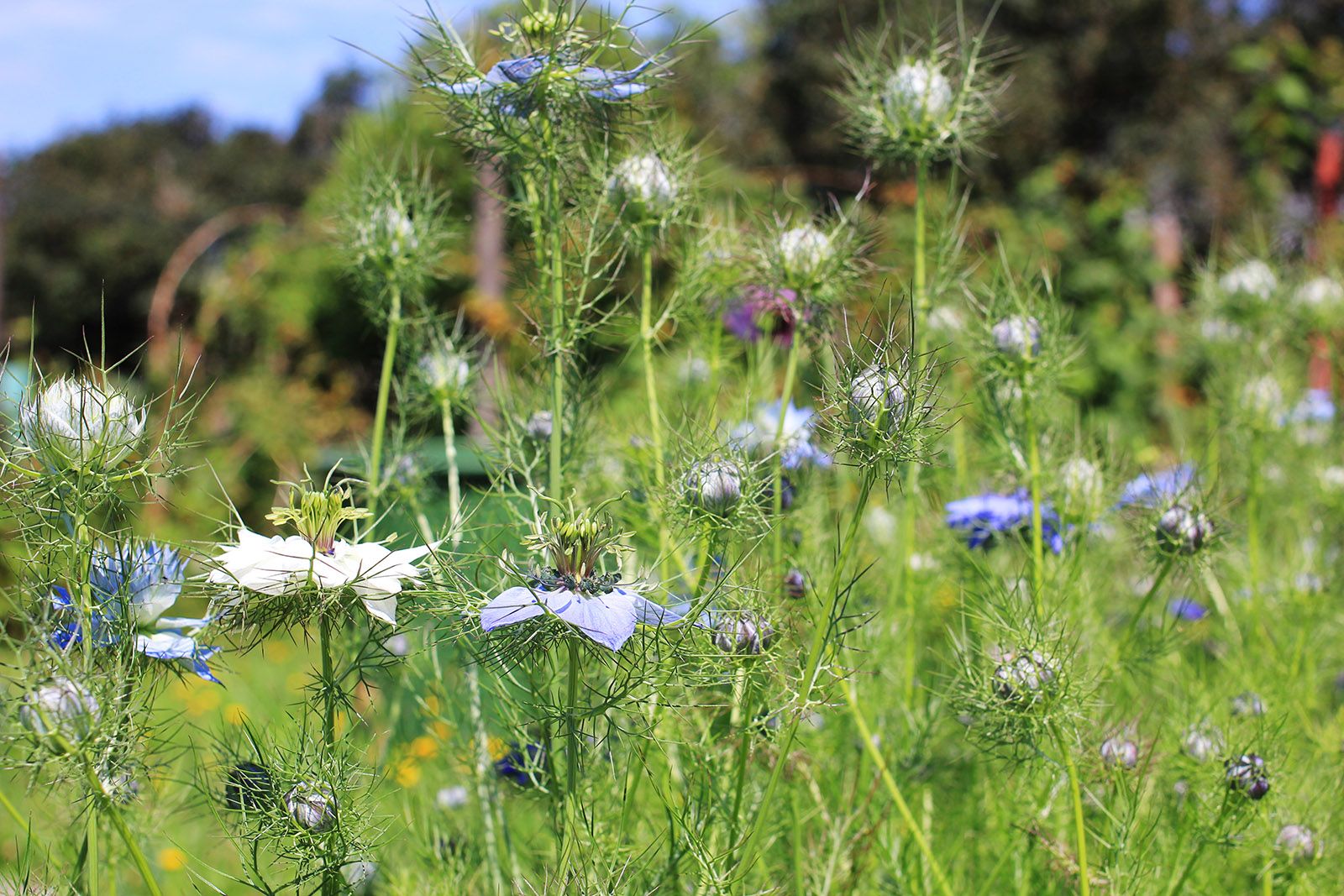Promoting biodiversity with wild plants
We're all excited about colorful flowering corners and meadows that are buzzing with life. Does it matter which plants we bring into our garden? The main thing is colorful and a visual feast for the eyes?
It is not quite like that. True, a diverse garden is usually more attractive than a monotonous one with lawns and topiary hedges around it. Nevertheless, not all plants are equally well suited to provide food and habitat for our native wildlife.
The key word is "coevolution." Over many millennia, animals and plants have co-evolved and developed mutual dependencies and symbioses. A great many specialists have evolved - the caterpillar food plants of butterflies are a good example. Butterfly caterpillars can't do much with exotic species and also with many of our native wild plant species that have been highly refined in cultivars.
For example, the swallowtail caterpillar subscribes to the wild carrot, (Daucus carota) one of the parent plants of our present-day carrot. Without wild carrot, none of these elaborate caterpillars; without these caterpillars, no swallowtails. Although until a few decades ago the wild carrot was to be found at every wayside, on every rubble patch, its distribution has declined greatly due to the intensive use of our landscape.
So if you want to promote biodiversity, you should stock your garden with as high a proportion of wild plants as possible, and in this way "plant animals", as Ulrike Aufderheide has put it so well (see also literature tips). On average, ten animal species benefit from each native plant.
Which plants are particularly suitable now?
With the animals there are once the generalists, and then there are the picky ones. The generalists, as you can imagine, have it easier when it comes to getting food. They can get nectar, like the honey bee, for example, from a great many plant species, often even the exotic ones.Many wild bees are etepete.
The situation is different for most species of wild bees, and also for very many species of butterflies. Their caterpillars and the moths often feed on a single plant family. One example is the bellflower scissor bee. To line its nesting tunnels for its offspring, it needs a whole lot of bellflower flowers near its nest. A single plant is not enough. It is similar for adult butterflies.The Small Fox (Aglais urticae), on the other hand, is not very specialized, inhabiting many habitats. For this reason, it is still fairly common in our gardens as well as in the open countryside.

These are only a few examples from the huge number of animal/plant pairs that have arisen through the incredibly long time of their common evolutionary history. Almost sweepingly one can say to it, the longer and more uninterruptedly the common evolution lasted, the higher the ecological value of the plant.
Even among fruit-eating bird species, there are plenty of examples of shrubs or trees that are particularly popular. The oak (Quercus robur) with 28 bird species and especially the black elder (Sambucus nigra) with 64 species are in the lead.

In addition, many species of songbirds depend on caterpillars as a food source for raising their young. So if you want to do something, both for butterflies and for the chirping in our trees, you should plant caterpillar food plants, and as many of them as possible on your doorstep. However, the popular butterfly bush (Buddleja davidii), which is native to western China and inhabits dry steppes there, is not a good example here. It may seem suitable and popular as a nectar source for adult butterflies - but as Belgian researcher Yves Desmons has found out, this is by no means the case. The flowers contain little nectar, but a lot of caffeine. The butterflies become addicted to this, and at the same time they starve during the energy-consuming search for food. The result is that they no longer reproduce. It is also worthless as a caterpillar food plant. And without gluttonous caterpillars, Eric Carle already knew, unfortunately no butterflies.
Aphids are also popular with chicks, you should have that in mind when scowling at the aphid infestation on your fresh cherry tree shoots and bean plantlets.

Ecosystem front garden
The ecological regulatory system certainly works best when we allow and encourage as much biodiversity as possible.The first principle in this, of course, is to keep our garden toxin-free. This is almost self-evident, because with the poison we kill not only the unwanted insect, but equally its predator.

Animals love wild corners
Next, we should possibly curb our tidiness a bit. For example, if we dispose of dead perennial material in the compost or even in the green garbage can in the fall, we are simultaneously destroying overwintering sites, pupa houses for larvae and winter food for birds.So bringing wild plants into our garden is only one thing. In order for a closed life cycle to take place for many animals in our front yard, we also need some insight into biological-ecological processes and perhaps some lateral thinking as far as the usual garden conventions are concerned.
Cover photo: Horned mason bee (Osmia cornuta) on barberry flower, pixabay.
Literature
Ulrike Aufderheide: Planting animals, pala Verlag 2020Paul Westrich: The wild bees of Germany, Ulmer Verlag 2019
www.floraweb.de List of butterfly plants







